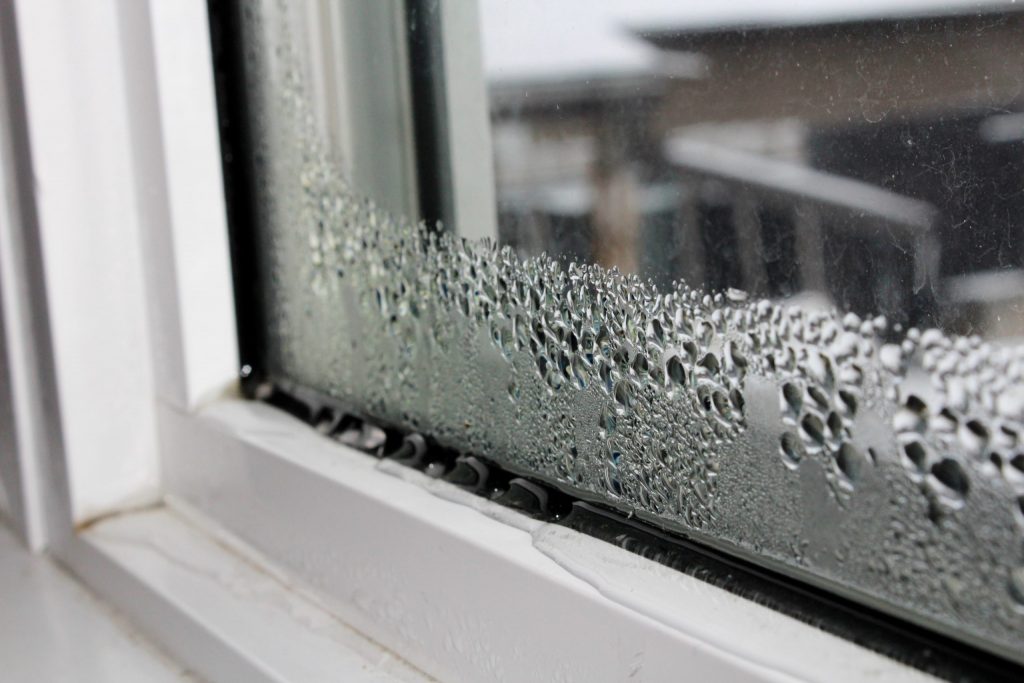Maintaining optimal indoor air quality (IAQ) in commercial buildings relies heavily on several factors, including humidity control. Poor humidity control can affect your HVAC equipment, building materials, and your tenants’ health. The challenge for many commercial property owners is knowing the right humidity level for their building to ensure that the best quality air reaches the indoor space and prevent the damage caused by too high or low humidity.
The Effects Of Air That’s Too Dry
Excessively dry air in your building can cause the wood behind your walls to deform and crack. Paint may begin to chip and fall. Dry indoor air also increases the risk of electrostatic discharges, damaging sensitive electronic equipment, and possibly compromising essential or sensitive data.
When indoor air is too dry, small particles such as dust or viruses linger in the air longer. These contaminants can irritate the eyes, skin, and respiratory system or cause viral illnesses in your building occupants, which could spread through your building and have devastating effects on your tenants’ business.
Problems Caused By High Humidity Levels
If you feel the air is too dry in your building, which is a common concern during winters in Southern Ontario, raising the humidity level may solve the problem. However, like air that’s too dry, excessively humid indoor air can cause damage to your building’s materials, tenant discomfort, and health problems.
The problems high humidity can cause depends on where moisture gathers. For example, condensation on metallic surfaces or systems constructed of cast iron can cause rust. Wood within walls and paint are also vulnerable to the effects of accumulated moisture.
High humidity creates a breeding ground for mold and dust mites, which can trigger allergies, cause asthma flare-ups, and result in respiratory irritation in your building’s occupants. You can rectify this problem by keeping humidity levels at an optimum level, in which case mold and dust mites die off.
What Is The Right Humidity Level For My Building?
In most buildings, we recommend a humidity level of between 40 – 45 percent. Humidity levels that drop below 30 percent are typically considered too low. Over 50 percent humidity is generally considered too high.
Your building’s recommended humidity level will depend on several factors, including whether you’re located in an area that experiences extreme outdoor air temperatures or levels of humidity. The proper humidity level also depends on whether your building has adequate ventilation, the age or condition of your HVAC system, and if you operate combustion appliances and equipment that can increase indoor humidity.
It can also be helpful to check for visual signs of improper humidity levels. Although it might not be feasible to look for damage to wood within the walls or your machinery, you can look for these indicators that might suggest if the humidity level needs to be adjusted:
- Condensation on outward-facing windows
- Signs of mold
- Building occupants seeming congested or complaining they can’t breathe very well
Your HVAC system plays a significant role in controlling the relative humidity level in your building. Call your HVAC technician for recommendations on the proper humidity levels for your building and how to maintain them.
Keep Humidity Levels With The Proper Range
The easiest way to control relative humidity in your commercial building is to have a qualified HVAC technician inspect the condition of your HVAC system and, if necessary, get recommendations on components that will keep your air humidity level within the optimal range.
For example, energy-recovery ventilation (ERV) systems can help by recovering moisture from exhausted indoor air to raise the humidity of dry incoming air from the outside. They also work in reverse to remove some of the moisture from incoming outdoor air that is too humid.
In other words, ERVs operate as both humidifiers and dehumidifiers, ensuring that the indoor air is kept at an optimal level throughout the year.
Remember that devices that help you better control humidity should be considered an investment, not a cost. The price of installing an ERV unit is significantly lower than trying the fix the damage to the walls, equipment, and components within your commercial building – not to mention the cost of shutting down your building due to a viral infection breakout.
As always, you’re welcome to call us anytime to learn how Springbank Mechanical Systems makes commercial HVAC maintenance easier, safer, and more cost-effective.
Gregg Little, Paul DeThomasis, and Hugo Lopes are co-owners of Springbank Mechanical Systems. You can reach them at 905-569-8990 or via email at gregg@springbank.com, paul@springbank.com, or hugo@springbank.com.

